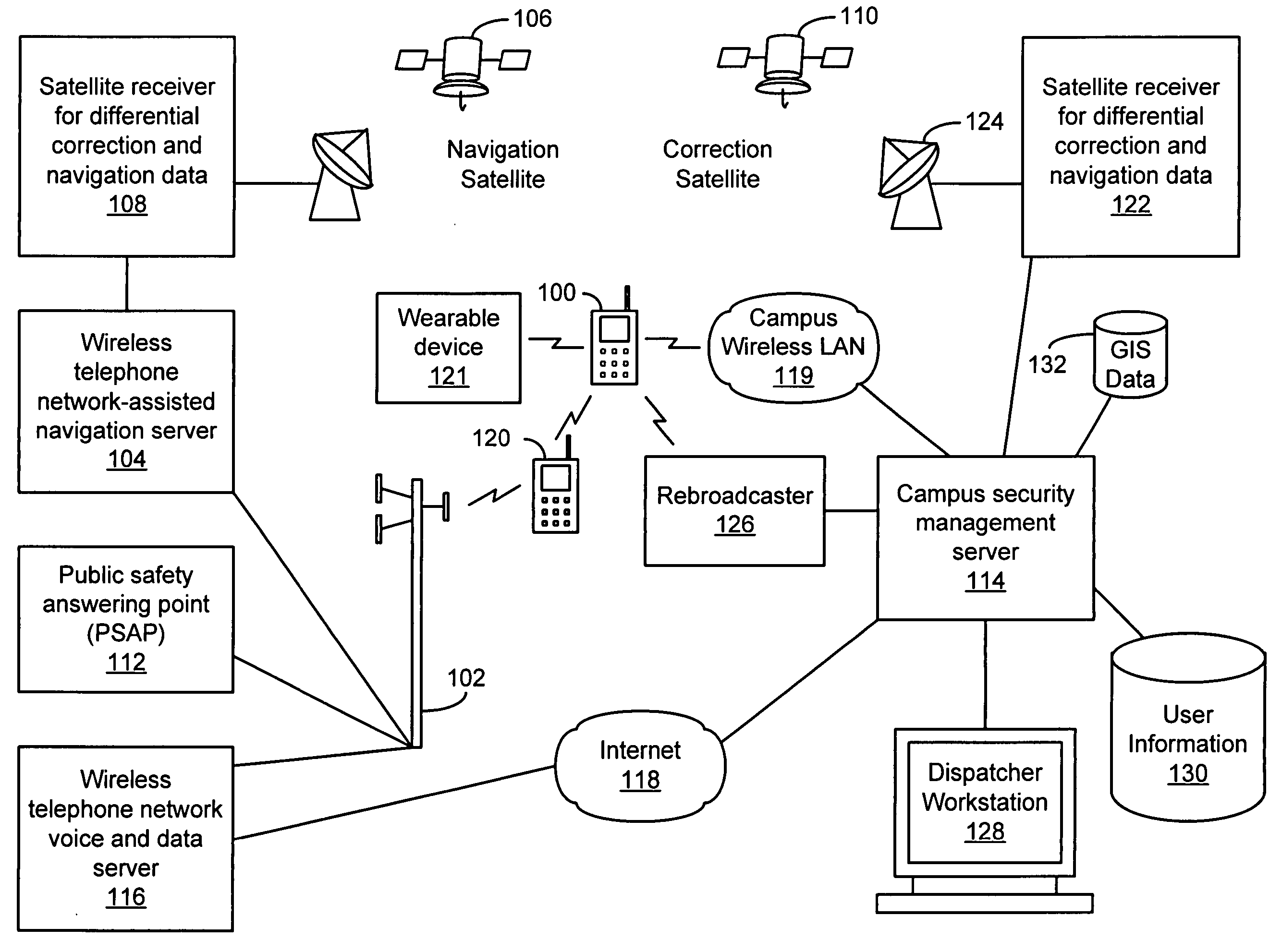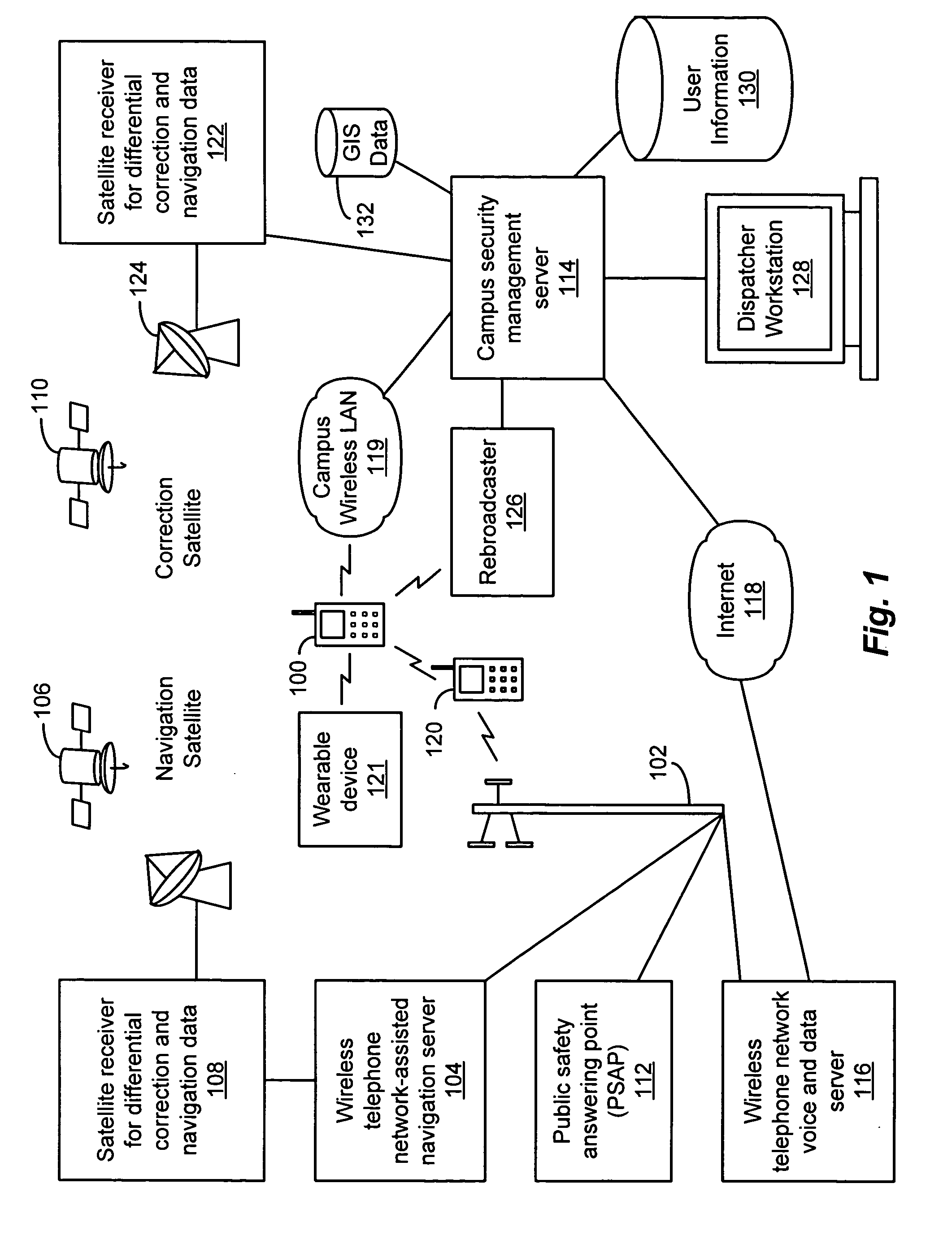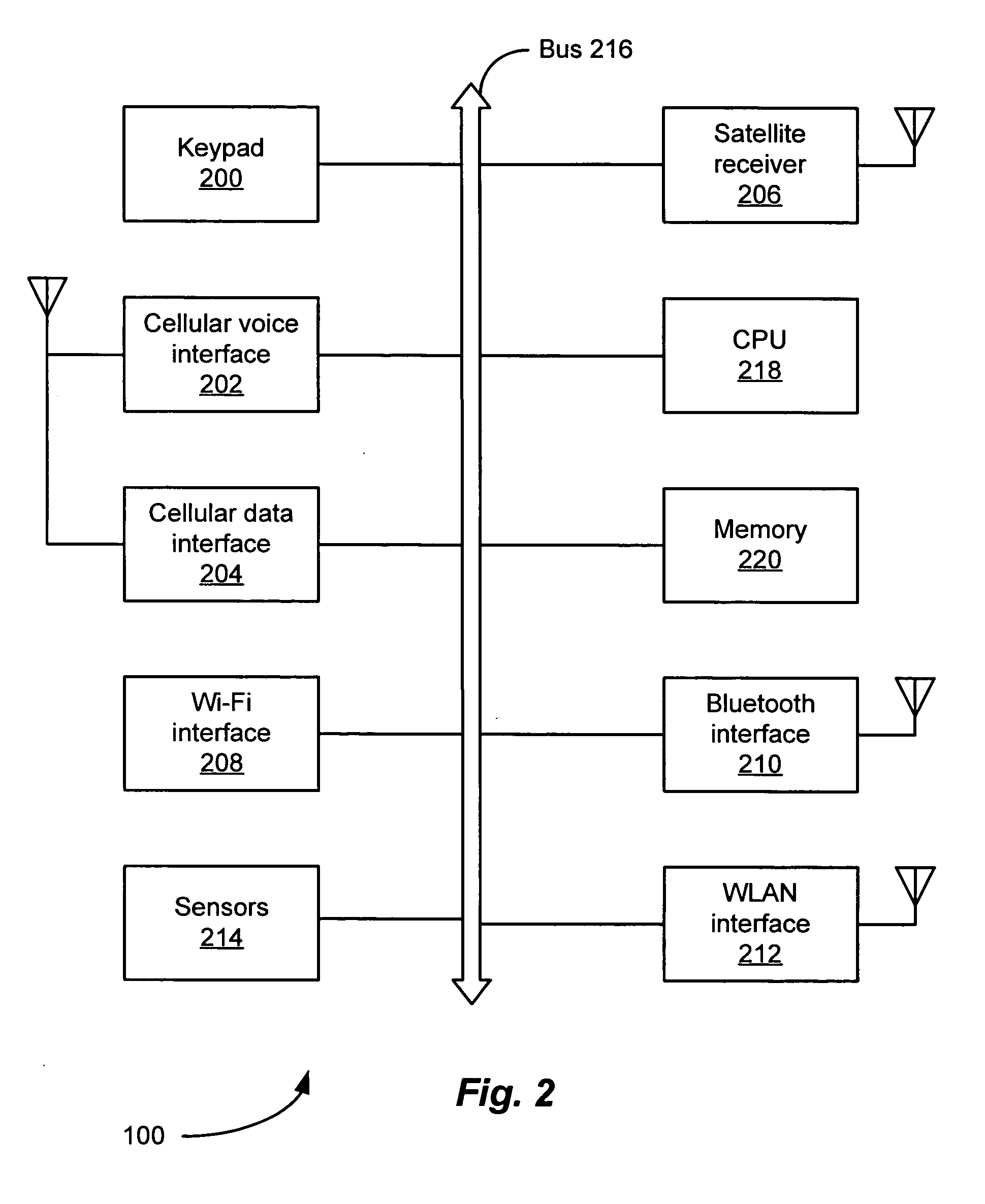Mobile emergency notification system
a mobile emergency notification and notification system technology, applied in the field of systems, can solve the problems of limited accuracy of automatically provided location information, campus safety organization cannot establish voice communication with the caller, and cannot collect any information about the emergency from the caller, so as to achieve the effect of varying the accuracy of the location information of the hands
- Summary
- Abstract
- Description
- Claims
- Application Information
AI Technical Summary
Benefits of technology
Problems solved by technology
Method used
Image
Examples
Embodiment Construction
[0025] The contents of U.S. Provisional Application No. 60 / 507,839 titled “Campus Security System,” filed Oct. 1, 2003 are incorporated by reference herein.
[0026] The invention provides methods and apparatus for providing secondary notifications to third parties of potential emergencies detected by wireless handsets. FIG. 1 is a block diagram of an exemplary system, according to the present disclosure. One or more wireless handsets, such as mobile telephones, wireless telecommunication systems for the deaf, wireless PDAs, two-way pagers or wireless portable computers, are served by one or more wireless networks. For example, an exemplary handset 100 is served by one or more wireless telephone networks (represented by cell tower 102).
[0027] The handset 100 and / or the wireless telephone network 102 can include a facility to ascertain the location of the handset. For example, the wireless telephone system 102 can include a network-assisted navigation server 104 to provide location in...
PUM
 Login to View More
Login to View More Abstract
Description
Claims
Application Information
 Login to View More
Login to View More - R&D
- Intellectual Property
- Life Sciences
- Materials
- Tech Scout
- Unparalleled Data Quality
- Higher Quality Content
- 60% Fewer Hallucinations
Browse by: Latest US Patents, China's latest patents, Technical Efficacy Thesaurus, Application Domain, Technology Topic, Popular Technical Reports.
© 2025 PatSnap. All rights reserved.Legal|Privacy policy|Modern Slavery Act Transparency Statement|Sitemap|About US| Contact US: help@patsnap.com



